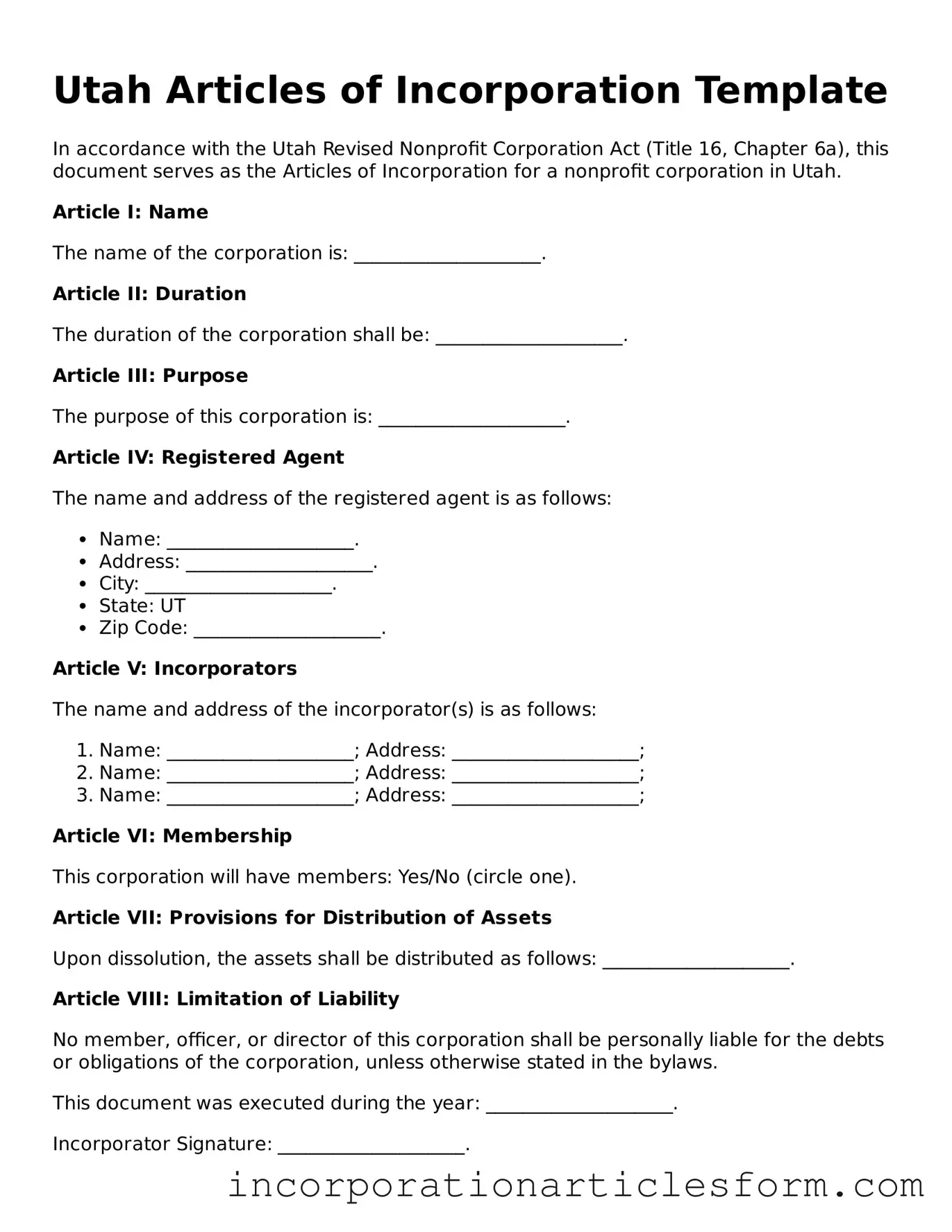The Articles of Incorporation is a foundational document for creating a corporation in Utah, but several other documents serve similar purposes in different contexts. One such document is the Certificate of Formation. This document is used in many states, including Delaware, to establish a new limited liability company (LLC). Like the Articles of Incorporation, the Certificate of Formation outlines essential details about the entity, such as its name, purpose, and registered agent, providing a legal framework for the business's existence.
Another similar document is the Bylaws. While the Articles of Incorporation establish the corporation's existence, Bylaws provide the internal rules governing the management and operation of the corporation. They detail how meetings will be conducted, the roles of officers and directors, and other operational procedures. Together, these documents create a comprehensive structure for both external compliance and internal governance.
The Operating Agreement is akin to Bylaws but is specific to LLCs. This document outlines the ownership structure, member responsibilities, and operational guidelines. Just as the Articles of Incorporation serve as a public record of a corporation’s existence, the Operating Agreement is crucial for defining the relationships and responsibilities among LLC members, ensuring clarity and reducing potential conflicts.
Incorporation also shares similarities with the Partnership Agreement. This document is essential for partnerships, detailing the rights and responsibilities of each partner. It outlines how profits and losses will be shared, management duties, and procedures for adding or removing partners. While it serves a different type of business structure, its purpose of establishing clear guidelines is similar to that of the Articles of Incorporation.
The Certificate of Good Standing is another document that complements the Articles of Incorporation. This certificate verifies that a corporation is legally registered and compliant with state regulations. It is often required for business transactions, such as securing loans or entering contracts. Just as the Articles of Incorporation mark the beginning of a corporation’s life, the Certificate of Good Standing confirms its ongoing legitimacy.
The Statement of Information is similar to the Articles of Incorporation in that it provides essential information about a corporation. Required in some states, this document must be filed periodically and includes details such as the corporation's address, officers, and directors. It ensures that the state has up-to-date information, much like the initial filing of Articles of Incorporation does at the corporation's inception.
In some cases, a business might file a Trade Name Registration, also known as a “Doing Business As” (DBA) registration. This document allows a business to operate under a name different from its legal name as listed in the Articles of Incorporation. It’s particularly useful for branding purposes and ensures that the business name is recognized legally, similar to how the Articles provide official recognition of the corporation.
The Business License is another important document that parallels the Articles of Incorporation. While the Articles establish the corporation's legal status, a business license is often required to operate legally within a specific jurisdiction. This document ensures compliance with local regulations and ordinances, highlighting the importance of adhering to both state and local laws in the business landscape.
Lastly, the Federal Employer Identification Number (EIN) application is similar in purpose to the Articles of Incorporation. While the Articles create the corporation, the EIN is necessary for tax purposes and allows the corporation to hire employees, open bank accounts, and file tax returns. It serves as a unique identifier for the business, much like the Articles of Incorporation identify the corporation legally.
